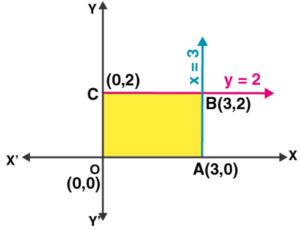
According to the question:
![]()
and the constraints
![]()
.
Plotting all the constrain equations we see that the shaded area OABC is the feasible region determined by the constraints.
The feasible region is bounded with four corner points
![]()
.
So, the maximum value can occur at any corner.
On evaluating the value of Z, we get

From the above table it’s seen that the maximum value of Z is
![]()
.
Therefore, the maximum value of the function Z is
![]()
at
![]()
.
